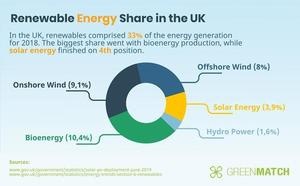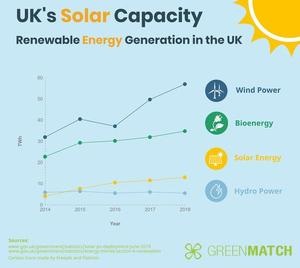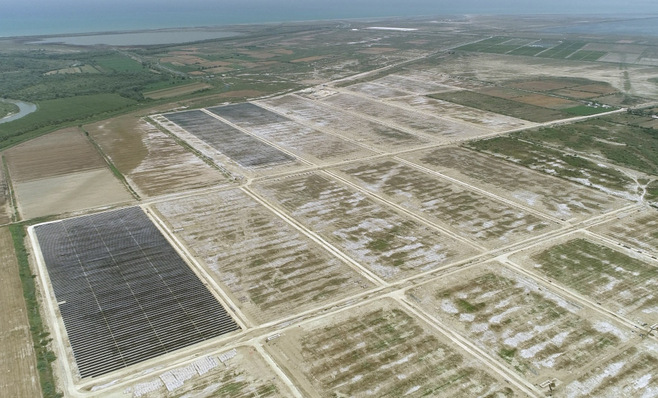The deadline for EU countries to reach their goals is knocking on the door and less than half of them have reached the finish line so far. According to a recent Eurostat official update, only 11 countries have fulfilled their 2020 renewable energy targets. Some of them include: Germany, Sweden, Denmark, Finland, Italy, Croatia, Bulgaria, and the Czech Republic.
However, there are still a lot of EU member states that are quite far from accomplishing their goals. For instance, the United Kingdom still has to cover the remaining 4.8%, Ireland has to fill in 5.3% more, and France 6.7%.
Current state of the EU solar market
More than 11 GW of solar power was added in Europe in 2018, which accounts for 21% annual increase in solar installation. Therefore, it can be concluded that the European solar market had a very successful year.
Additionally, the demand for solar power in the European Union raised by 37%, which could be related to the establishment of the 2020 EU targets for renewable energy. On top of that, 22 member states added more solar power to the grid than in 2017.

Furthermore, the maximum net generating solar capacity of the EU was estimated to be 171 GW for 2018. However, only three countries showed capacity of more than 10 GW, with Germany coming on the top of the list with 45.9 GW solar capacity, followed by Italy with 20.1 GW, and the United Kingdom with 13.1 GW.
Unfortunately, most of the European countries so far have a solar capacity of less than 3,000 MW, which also leads to a huge gap between them and the best performers on the market.
Will the UK get back in the game?
Even though the UK’s solar capacity is the third highest in the EU, the country still has a lot to catch up with its 2020 renewable energy target. Currently, the total renewables share of energy generation in the UK is 33%, which reveals an increase of 3.8% compared to 2017.
The biggest share in 2018 was that of onshore and offshore wind power, which combined comprised 17.1%. The second most used renewable energy in the UK was bioenergy with 10.4% and third, solar energy with 3.9%.

In the United Kingdom, there are a total 1,007,427 installations, of which more than 90% are covered by small-scale PV systems. Furthermore, only in June this year, there have been 2,375 confirmed new sub-4kW PV installations, while the number of large scale photovoltaic systems remained the same.
Astonishingly, the UK’s solar capacity has more than doubled in the period from 2014 until June 2019. More precisely, it has increased from 5,488.6 MW to 13,259 MW. Moreover, for the period the Feed-in Tariff was active, there were 992,065 new solar panel installations.

On the downside, the British government has introduced new changes in the legislation for PV systems. Among some of the most important are the closure of the Feed-in Tariff and the increase of the VAT on photovoltaic installations from 5% to 20%, taking effect from 1st October. All of these are expected to restrict the development of the UK solar market.
Fortunately, the government also runs a new initiative named Smart Export Guarantee (SEG), which will provide financial support to small low-carbon generators. Moreover, it is expected that the UK solar market will increase with 2,711 MW up to 15,674 MW by 2023, which also leads to the assumption that there is still a chance for the country to make a comeback, GreenMatch expects. (GN/HCN)







